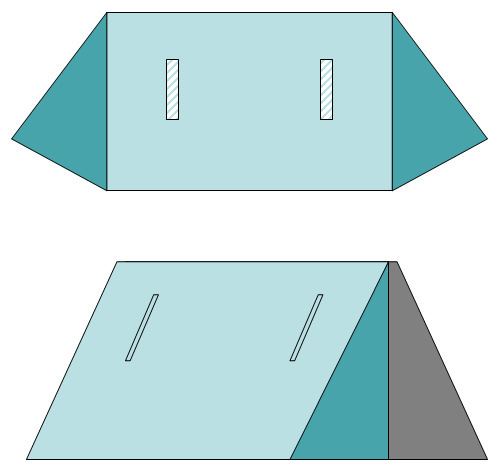 | ||
Similar Swag (bedroll), Bivouac shelter, Lean to | ||
A shelter-half (UK, Australia, and United States; also known in American English as a pup-tent, the German equivalent, dating from before the Second World War, being the [Dreiecks]Zeltbahn or triangle tarpaulin), is a simple kind of tent designed to provide temporary shelter and concealment. Two sheets of canvas or a similar material (the halves) are fastened together with snaps, straps or buttons to form a larger surface. The shelter-half is then erected using poles, ropes, pegs, and whatever tools are on hand, forming an inverted V structure.
Shelter halves are a mainstay of most armies, and are known from the mid 19th century. Often, each soldier carries one shelter-half and half the poles, etc., and they pair off to erect a two-man tent. The size and shape of each half shelter piece may vary from army to army, but are typically rectangular, triangular or lozenge shaped. When time and space allow, some forms of half-shelters can be combined into a larger, more complex tent.
Shelter-halves are usually designed to serve double duty as ponchos against the rain, or for the concealment of snipers. While the fabric is often simple olive drab, several nations use camouflaged fabric. Indeed, the first printed camouflage for soldiers were the Italian Telo mimetico introduced in 1929 for their half-shelters. The first camouflage uniforms were the Second World War German paratrooper smock, based on their M1931 Splittermuster shelter-halves.
